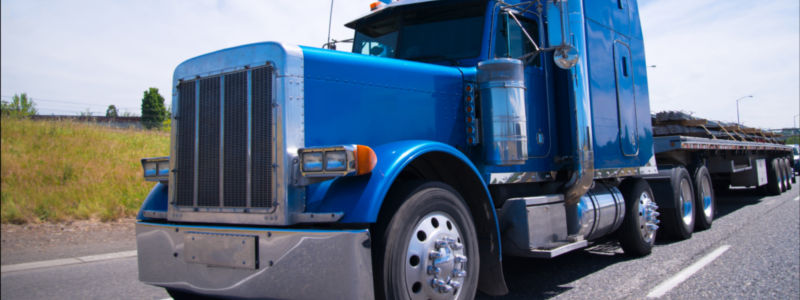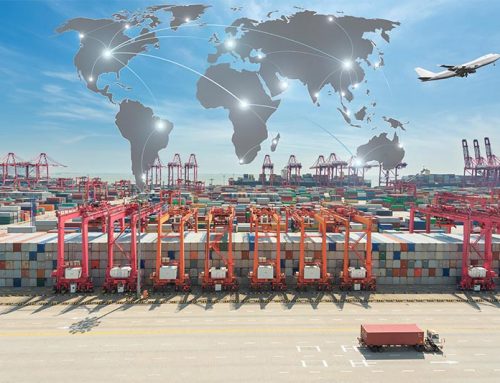The Top Supply Chain Stores of 2016
It’s been another fast and busy year here at Logistics Viewpoints. Today’s column is our final column of the year, as we take a few weeks to rest and re-energize to bring you more exciting articles in the new year. For today’s column, I want to revisit some of the top supply chain and logistics stories that occurred in 2016 and will continue to shape the industry in 2017 and beyond.
Trump Wins the Election
In what many people have called a stunning victory, Donald Trump won the 2016 Presidential Election. In fact, later today, the Electoral College will make it official. There are a few big stories associated with Trump’s victory from a supply chain and logistics standpoint. First and foremost, there is the trade angle. Donald Trump has already said that he will pull the US out of the Trans-Pacific Partnership (PTT) trade agreement, which Japan’s Parliament ratified last week. Although the ratification was mostly symbolic as the agreement requires US ratification in order for it to take effect. Additionally, Trump has often said that the US gets the short end of the stick on most trade deals, and will certainly re-negotiate with its trade partners. This has many countries unsure of what global trade will look like, and how much the Trump-led US government will try to shake up trade deals.
The other interesting note from Trump’s win has been the support of the US trucking industry. Per his comments around infrastructure, the industry has high hopes that money will be poured into improving conditions on highways and infrastructure. This thought helped settle concerns from Wall Street and avoided what had been dreaded as a major falloff in the stock market. Who knows what the future of a Trump-led White House will look like, but there are serious global and domestic concerns about the direction of the country and its trade partners. It will certainly be an interesting development to watch over the next 4 years.
Acquisitions
2016 was another big year for acquisitions. One of the more recent ones was also one that took some people by surprise when Walmart acquired Jet.com. I wrote earlier this year that the acquisition to me looked like a desperation move by Walmart to close the gap with Amazon. Jet.com has shown some promise in its brief existence. But that is one area of concern for the acquisition – the brief existence. Jet.com has only been in business for a little over a year, and has not demonstrated a path to profitability. Additionally, the company has shifted its strategy, dropping its membership fee after only a few short months. The biggest component of the Jet.com platform that Walmart seems interested in is the dynamic pricing algorithm. This seems like the biggest gain for Walmart in the acquisition.
Uber had a busy year, with the big news being its acquisition of Otto, the autonomous truck start-up based in San Francisco. Uber was looking into self-driving technology, but with the acquisition of Otto, it is looking into long haul trucking as another core part of its business. And so far, the company has successfully made two autonomous truck deliveries, one in the early morning and one in rush hour traffic. With the future of trucking in flux, self-driving trucks could be the answer.
A few years after UPS’ acquisition of Dutch parcel delivery company TNT Express was blocked by regulators, FedEx was able to acquire the company for $4.8 billion. Respectively, the companies were the third and fourth largest players in the European express delivery market. The acquisition pushed FedEx’s employee count to nearly 400,000 worldwide, with revenues close to $58 billion. This puts FedEx in a dead heat with UPS from a revenue standpoint, although it still employs roughly 40,000 less people.
Hanjin
Hanjin Shipping was South Korea’s largest container line and one of the world’s top ten container carriers in terms of capacity. In April, the company applied for a debt restructuring in order to avoid insolvency proceedings. The company filed for bankruptcy protection, and all hell broke loose. And by all hell, I mean an absolute logistics nightmare. Initially, many international ports denied access to its vessels. This prompted Hanjin to inject $90 million, including $36 million from its chairman Cho Yang-ho’s personal assets, to help resolve disruptions to container cargo transport caused by Hanjin’s financial troubles. Unfortunately, the money it invested was far short of the fees it had to pay to offload cargo on the vessels. This left an estimated $14 billion worth of goods still adrift, with most of that cargo needed for the holidays. The matter is still not fully resolved, as the company is in the process of shutting down offices and dismantling its service network.
Drones
Yes, drones are still here for us to discuss. Even though most retail businesses are not looking seriously at drones at this point as viable delivery options, the topic is as hot as ever. The big question becomes what are the actual practical uses of drones for deliveries? One of the biggest pieces of news I read this year was about Zipline, a US robotics drone company. The company made history by delivering blood by drones in Rwanda. The program has Zipline dropping blood parcels via parachute to remote health centers. Health workers can request a blood drop via text message, and it arrives around 30 minutes later. The big news here comes down to infrastructure, where even a short drive can take hours due to road conditions. This seems like the type of work drones are meant for.
But, not to be outdone, the retail sector has been pushing drone deliveries as well. In fact, over the last few months, JD.com, Domino’s Pizza, 7-Eleven, and Amazon have all made their first drone deliveries. But don’t expect these to become the norm just yet, especially in the US. The more practical side of drones comes in the form of drones in warehouses and yards, as they are able to monitor and manage inventory and logistics. Companies like PINC offer solutions that make use of RFID for real time location of yard assets. But we’ll keep a close watch on what drones have in store for us.
Warehouses
Warehouses have been in the news a lot lately as well. And there really have been two major trends. The first is the types of warehouses being built. With more and more retailers downsizing their in-store operations, there has been a trend to build more sophisticated warehouses that can meet the changing needs of retail. This means more automation in the warehouse as well as putting warehouses closer to end-consumers, specifically in cities. This results in smaller, more efficient warehouses in urban areas.
The second trend is robots in the warehouse. The first thought here immediately goes to Kiva robots (acquired by Amazon) bringing pallets of goods to people for picking and packing. But now, there are a host of companies supplying robots that reduce travel and picking time, as well as enhance navigation in the warehouse. Combined with drones, these new and emerging technologies will change the way that warehouses function, and how quickly they can pick, pack, and fulfill orders. And with the changing nature of omni-channel logistics and customer demands, this is one area that will need continuous improvement.
Conclusion
So there it is, the top five supply chain and logistics stories. Of course there are many other big stories out there, but these are the five that have gained the most traction (at least in my opinion). The industry as a whole will continue to change and evolve, and some of these trends will become even bigger parts of our supply chain lives. I know I will certainly be tracking each of these over the next year to see how much things change. That’s it for us at Logistics Viewpoints this year. We’ll see you in January.



Leave A Comment